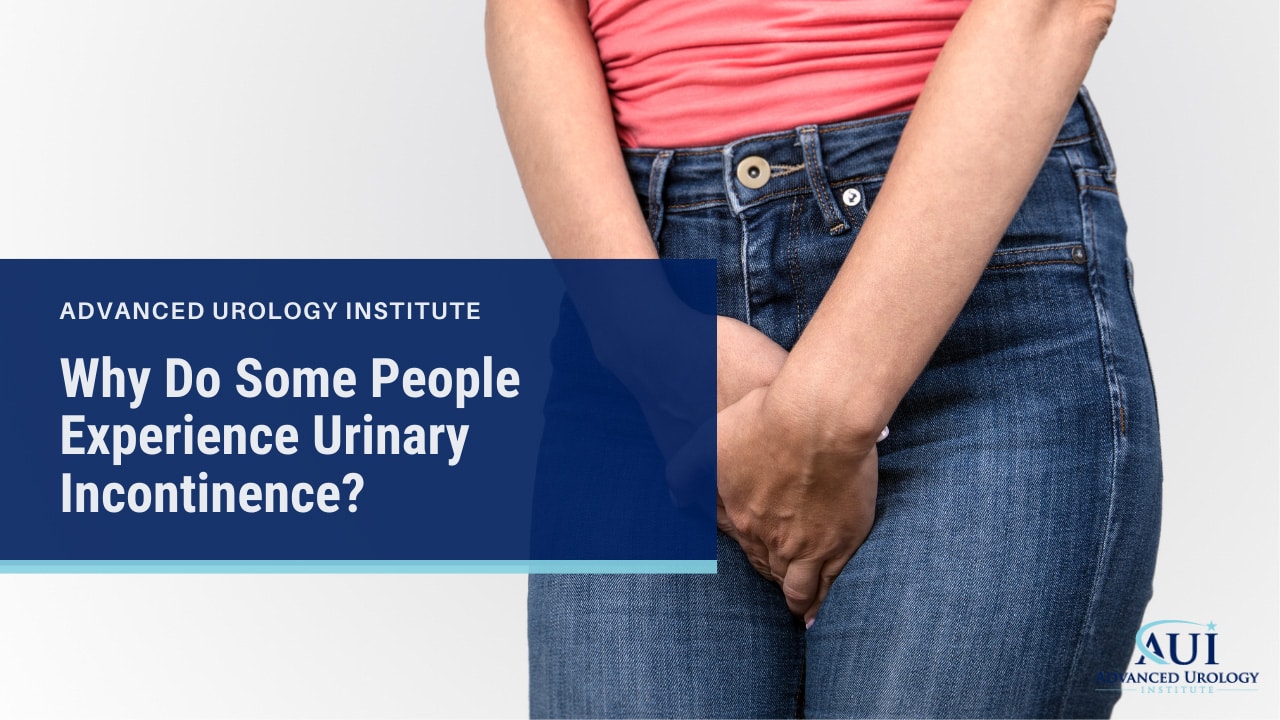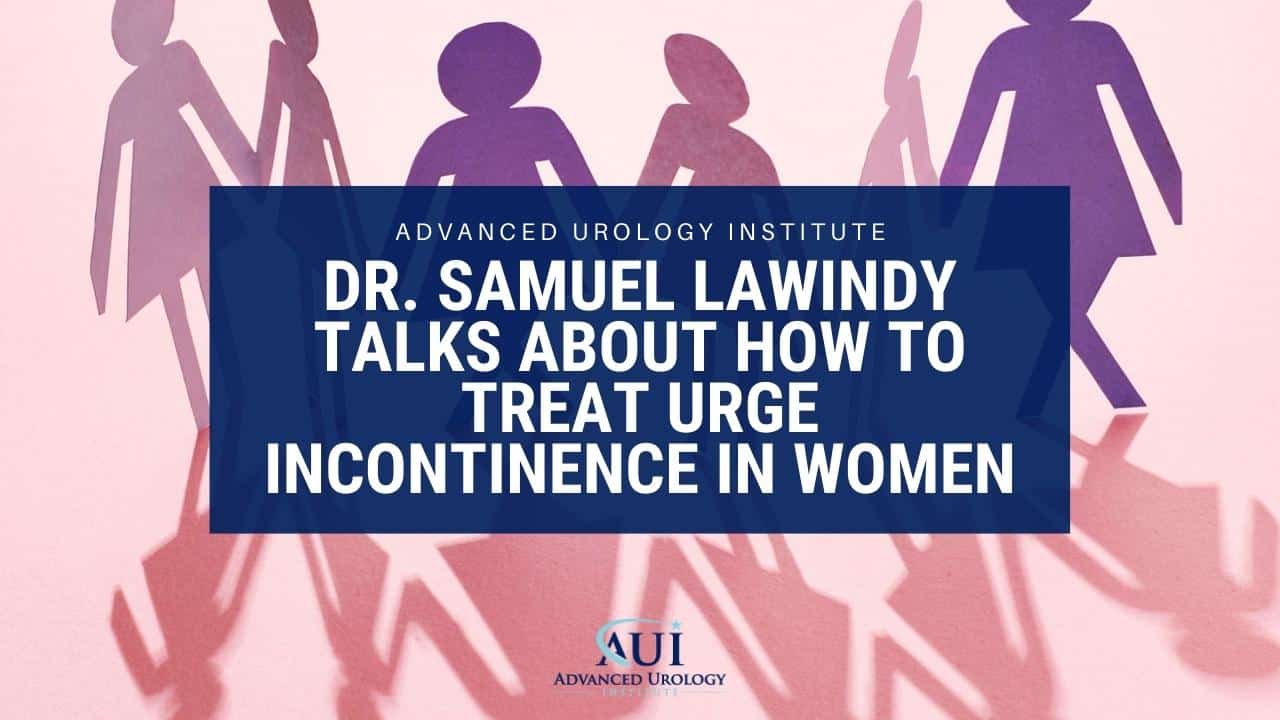People experience urinary incontinence because of several factors including age, gender, pregnancy, and medications that you take.
Continue readingDr. Samuel Lawindy Talks About How to Treat Urge Incontinence in Women
KEY TAKEAWAYS:
- Urge incontinence is a condition characterized by a strong, sudden uncontrollable urge to pass urine, which often results in urine leakage. It is often caused by dysfunction of the bladder or pelvic floor muscles due to factors such as pregnancy, childbirth, and hormonal changes around menopause.
- The treatment for urge incontinence often involves a combination of medications, such as anticholinergics and beta adrenergics, and behavioral treatments like bladder training, pelvic muscle exercises, biofeedback, or urge suppression. If medications don’t work, minimally invasive procedures may be recommended.
- At Advanced Urology Institute, prompt, reliable, and effective treatment is provided to patients suffering from urge incontinence, emphasizing that it is a treatable medical problem and should not be accepted as a normal part of aging.
At Advanced Urology Institute we see an increasingly high number of women presenting with urge incontinence. Urge incontinence is a condition where you are unable or have difficulty holding urine in your bladder long enough to reach the bathroom. And so, it is characterized by a strong, sudden uncontrollable urge to pass urine, which often results in urine leakage.
What are the signs that a woman has urge incontinence?
- Urine leaks associated with a sudden compelling desire to pass urine
- Strong urge to urinate frequently
- Changing multiple incontinence pads through the day
- Awkward leaks of urine that cause embarrassment
- Organizing life and activities around bathroom locations when in new environment
What causes urge incontinence?
Even though up to 50-percent of women may have urge incontinence at some point in their lifetime, roughly 10-20 percent experience extremely bothersome urge-related urine leakage.
Incontinence may occur as a separate condition, but in some women, it presents alongside other forms of incontinence due to an underlying medical condition.
Urge incontinence is often caused by dysfunction of the bladder or pelvic floor muscles.
Generally the dysfunction is due to:
- Pregnancy
- Childbirth
- Hormonal changes just before or after menopause
How is urge incontinence treated?
If you have persistent urge-related urine leaks, consider seeking a board certified urologist for a prompt diagnosis. During your visit, the doctor will take your medical history and conduct a complete physical examination focused on your urinary system, reproductive organs and nervous system. The doctor will also order various tests which will likely include an analysis of your urine sample.
If urge incontinence is diagnosed, your doctor will prescribe medications to relax your bladder and pelvic muscles as a way of relieving the symptoms. The medications may be used alone or in combination with behavioral treatments, such as bladder training, pelvic muscle exercises, biofeedback, or urge suppression.
The two major classes of medications used for urge incontinence are: anticholinergics and beta adrenergics.
The anticholinergic drugs include:
- Darifenacin (Enablex)
- Fesoterodine (Toviaz)
- Oxybutynin (Ditropan, Oxytrol, Gelnique)
- Solifenacin (VESIcare),
- Tolterodine (Detrol),
- Trospium (Sanctura).
The beta adrenergic medications include:
- Mirabegron (Myrbetriq)
- Vibegron (Gemtesa)
Your doctor may also recommend vaginal estrogen (creams, pellets or rings) as a form of estrogen replacement therapy to help you if the incontinence is due to menopause, particularly if the incontinence occurs alongside vaginal atrophy (dryness).
If medications don’t work, your urologist may consider minimally invasive procedures. A procedure such as percutaneous tibial nerve stimulation, electrical stimulation, sacral neuro-modulation therapy (Interstim), or Botox bladder injection may be recommended.
Prompt, reliable and effective treatment
At Advanced Urology Institute, we encourage patients to believe that urine leakage does not have to be a normal part of aging. Incontinence is a medical problem that can be treated effectively to reduce symptoms or eliminate the problem completely. So we strongly insist that no woman should tolerate or endure this kind of discomfort, especially when it is bothersome and is affecting their quality of life.
If you’re struggling with embarrassing urine leakage, please get in touch with us to schedule your consultation and find out how we can help you. At AUI, we offer some of the latest and best interventions in treating urological disorders. For more information on the diagnosis and treatment of urinary incontinence and other urologic disorders, visit the site “Advanced Urology Institute.”
TRANSCRIPTION:
So my name is Samuel Lawindy.
I’m a board certified urologist at Advanced Urology Institute.
So there is urgency and urgent incontinence for women.
That occurs when someone feels that they have the desire to go to the bathroom and they
can’t quite make it in time and then they’ll be leaking urine before they get there, wearing
multiple pads throughout the day, always aware of where the bathroom is and that commercial
everyone knows about got to go, go, go to the bathroom.
That’s urgent incontinence.
Very easily treated with medications and multiple different medications can be utilized.
If that doesn’t work, then there is some minimally invasive surgical procedures that can help you.
REFERENCES:
- “Anticholinergics: List, Side Effects, Uses, Warnings, and More.” https://www.healthline.com/health/anticholinergics
- “Vaginal atrophy – Symptoms and causes – Mayo Clinic.” 17 Sep. 2021, https://www.mayoclinic.org/diseases-conditions/vaginal-atrophy/symptoms-causes/syc-20352288.
- “Incontinence: Leakage, Causes, Diagnosis, Treatment & Prevention.” 23 Oct. 2020, https://my.clevelandclinic.org/health/diseases/17596-urinary-incontinence.




